September 2019
By Matias Spektor, Togzhan Kassenova, and Lucas Perez Florentino
Promising a shake-up of Brazil’s policies, the far-right Jair Bolsonaro won the nation’s presidential elections in October 2018. A staunch supporter of U.S. President Donald Trump, from whose playbook he borrowed extensively on his rise to power, Bolsonaro unveiled plans for an ambitious transformation of the country’s nuclear policy.
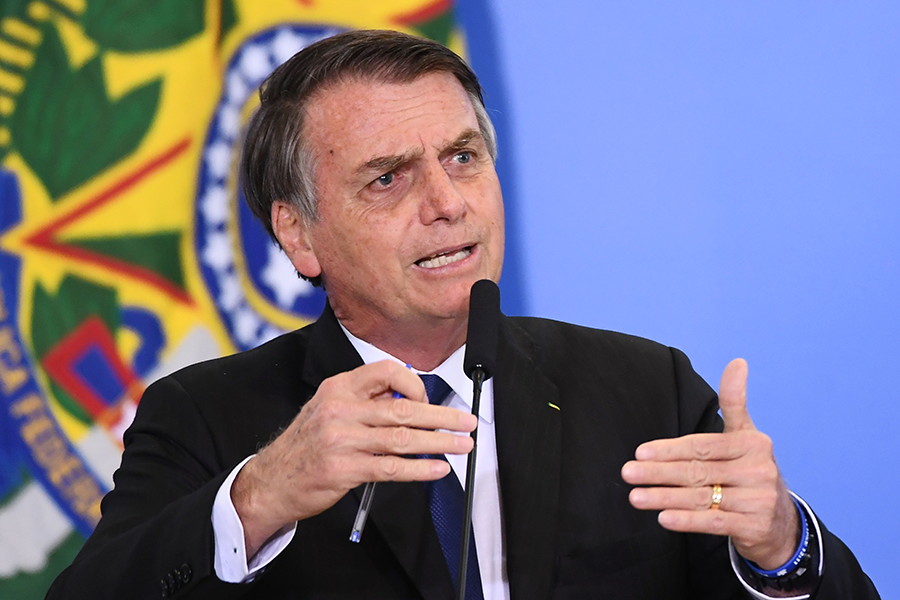 Some seeds for change had been planted before he came to power, as an official working group set up by his predecessor drafted new principles and guidelines to govern the country’s nuclear sector,1 but Bolsonaro’s administration doubled down on implementing a fast-paced reform from the outset. In the last eight months alone, the president began to open up the nuclear sector to private investment, substituted old tenets of nuclear diplomacy for new ones, and restated ambitious plans to acquire additional capabilities. Over the next decade, Brazil aims to launch a nuclear-powered submarine, produce naval nuclear fuel, explore new uranium mines, construct a third nuclear power plant, expand uranium-enrichment capacity, and launch a new research reactor.
Some seeds for change had been planted before he came to power, as an official working group set up by his predecessor drafted new principles and guidelines to govern the country’s nuclear sector,1 but Bolsonaro’s administration doubled down on implementing a fast-paced reform from the outset. In the last eight months alone, the president began to open up the nuclear sector to private investment, substituted old tenets of nuclear diplomacy for new ones, and restated ambitious plans to acquire additional capabilities. Over the next decade, Brazil aims to launch a nuclear-powered submarine, produce naval nuclear fuel, explore new uranium mines, construct a third nuclear power plant, expand uranium-enrichment capacity, and launch a new research reactor.
The Brazilian government is undergoing a massive program of fiscal adjustment to curb public spending, so the administration reasons that if it is to maintain and extend its nuclear capabilities, it needs to invite private investment into a field that has traditionally relied on public funds alone.
To achieve these nuclear ambitions, not only will Brazil require an updated regulatory framework capable of unlocking public-private partnerships, but also one that responds to growing demands for strengthened nuclear safety and security, and improving oversight to curb the risk of political corruption and embezzlement.
In the process, the Brazilian Navy has gained even greater ascendancy over the management of the nuclear sector, with relevant implications for the country’s stance on nuclear safeguards.
Pursuing Nuclear Energy
For decades, Brazil has relied on oil, gas, ethanol, and hydropower for its energy needs. The country currently operates two nuclear power units, Angra 1 and Angra 2, which generated a mere 2.7 percent of the country’s electricity in 2017.2 Bolsonaro now wants to increase the role of nuclear power in the electric grid, and a third reactor at the Angra site will, when completed, add 12 million megawatt hours to the grid each year.3
Budget restraints prevented consistent progress, but all work stopped in 2015, when a major corruption scandal saw the imprisonment of top-ranking officers at Eletronuclear, the state-run company in charge of the nuclear power sector. This effectively halted all on-site construction and electromechanical assembly contracts. Eletronuclear estimates that resuming construction will require an overnight cost of $3.4 billion and about 55 months to complete. Abandoning the project is not an attractive alternative, with liquidation costs estimated at $2.9 billion. Brazil now wants foreign investors to complete the work. France’s EDF, Japan’s Mitsubishi, China’s CNNC, and Russia’s Rosatom are among potential foreign partners.
The government’s other nuclear priority is progress on naval nuclear propulsion and a domestically built nuclear-powered submarine. In June 2018, the navy began testing the integration of the turbogenerators of the land-based propulsion reactor prototype without its nuclear component. The prototype’s completion is scheduled for 2021.4 The industrial infrastructure for the construction of the nuclear-powered submarine is already in place and is currently used for building conventional submarines. The navy expects to start developing the detailed project for the nuclear submarine soon. The most recent estimates indicate that the first nuclear-powered submarine will be ready in 2029, with operations starting in 2030.5
Brazilian leaders also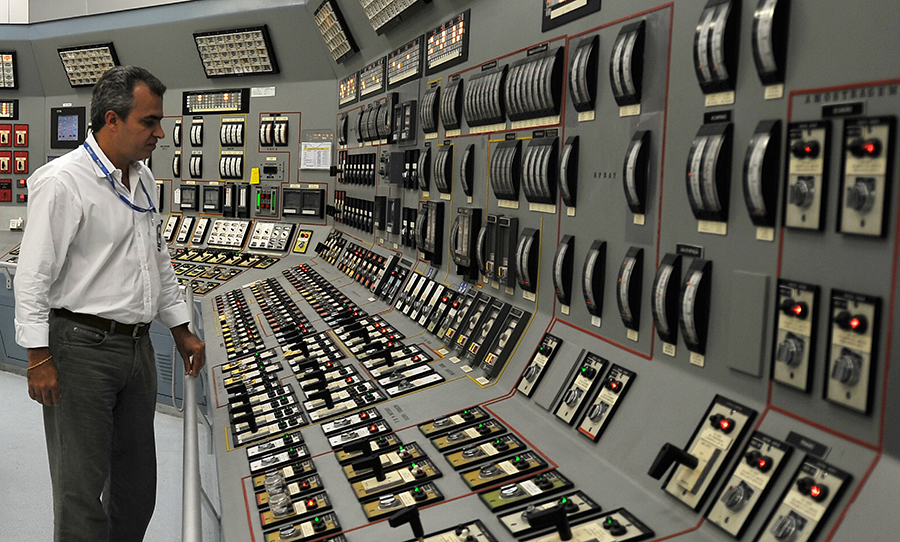 seek to expand efforts at Caetité, the nation’s only operating uranium mine, and to license new uranium and phosphate mining in Santa Quitéria. To do this, Brazil will have to streamline existing regulations and clearly divide labor between the state-controlled Nuclear Industries of Brazil (INB) and the private sector, divvying up the tasks involving nuclear and environmental licensing, safety and radiological protection and all remaining operations involving uranium. As of 2019, it is unclear what the final arrangement will be, and nuclear sector representatives worry that further delays may compromise the entire sector moving forward.6
seek to expand efforts at Caetité, the nation’s only operating uranium mine, and to license new uranium and phosphate mining in Santa Quitéria. To do this, Brazil will have to streamline existing regulations and clearly divide labor between the state-controlled Nuclear Industries of Brazil (INB) and the private sector, divvying up the tasks involving nuclear and environmental licensing, safety and radiological protection and all remaining operations involving uranium. As of 2019, it is unclear what the final arrangement will be, and nuclear sector representatives worry that further delays may compromise the entire sector moving forward.6
Brazil also plans to expand uranium-conversion and uranium-enrichment capabilities to reduce dependence on foreign suppliers. Even though Brazil’s installed capacity for fuel fabrication at 250 metric tons per year exceeds the demand of the country’s nuclear power reactors,7 Brazil lacks an industrial-scale conversion facility needed to make uranium hexafluoride gas for later enrichment.8 The Brazilian Navy’s still-uncommissioned, small-scale conversion facility will only cover naval needs. Brazil currently enriches uranium up to 4.3 percent uranium-235 at an industrial level and fabricates fuel for its nuclear power plants. On occasion, Brazil enriches to up to 19.9 percent U-235 for research reactors on a laboratory scale. As of 2017, Brazil’s domestic uranium-enrichment capacity provided a mere 14 percent of the amount needed to fuel Angra 1 and Angra 2.9 In 2018, the INB launched its seventh cascade of uranium-enrichment centrifuges, allowing for a 25 percent increase in production.10 The INB plans to meet the total national demand for enriched uranium by 2033.11
Addressing the back end of the nuclear fuel cycle, official Brazilian documents suggested for the first time in December 2018 that Brazil might seek to exploit irradiated fuel from its nuclear energy program: “Spent nuclear fuel will be stored at the appropriate site for future utilization of reusable material.” Some have interpreted this as a signal that Brazil might develop the capabilities to reprocess spent fuel. Such a capability would be a game-changer not only in terms of waste management at home but also of perceptions abroad of Brazilian nuclear ambitions.
In recent years, friction between Brazil’s nuclear sector and the environmental protection agency resulted in conflicting standards and methodologies used to govern nuclear and environmental regulation, poor coordination among overlapping regulatory authorities, and ineffective communication among the operators, regulatory agencies, local population, and social movements. Earlier this year, local residents and authorities in the region of Caldas, Minas Gerais, raised concerns about the structural integrity of a dam containing waste from the closed uranium mine in the region. As of February 2019, the dam operated without a safety certificate from the National Agency of Mining.12 In September 2018, the INB identified an “unusual event” in the drainage systems of the tailings dam, and a technical report identified serious damage and internal infiltration. To preserve the integrity of the dam, the INB carried out maintenance work, which it completed in June 2019.13 A productive working relationship between the nuclear and environmental authorities has always been a challenge and will likely remain so in the immediate future. Improvement is needed, however, as awareness is growing that improving standards for environmental protection will be key for the future of the nuclear sector, especially if it becomes increasingly integrated with private actors.
Perhaps the most critical change underway in Brazil’s nuclear governance is the decision to create an independent nuclear regulator. Calls for an independent nuclear regulator are not new due to concerns that the National Nuclear Energy Commission (CNEN) had conflicting interests when it simultaneously licensed and inspected state companies under its control. The decision to split existing functions has been a long time in the making and now looks irreversible.
The Navy Keeps Influence
The Brazilian Navy has been the key player in the country’s nuclear sector since the late 1970s. It holds exclusive ownership over the design and fabrication of uranium-enrichment centrifuges. It leases enrichment technology to the civilian nuclear industry under black-box conditions and fully vets and controls who has access to operating enrichment services at the INB. The Naval Command appoints the INB head of isotopic enrichment as well.
 The navy keeps strong connections with Brazil’s Nuclear and Energy Research Institute (IPEN), the country’s leading nuclear research and training institution. The navy helped IPEN secure funds for a new multipurpose reactor project, without which IPEN would be in dire financial straits. Navy officials lead Fundação Pátria, a nonprofit foundation that facilitates cooperation between IPEN and the Argentine nuclear technology company INVAP, the main partner in the multipurpose reactor project. Naval officers also occupy key positions on the governing board and the executive board of the project.
The navy keeps strong connections with Brazil’s Nuclear and Energy Research Institute (IPEN), the country’s leading nuclear research and training institution. The navy helped IPEN secure funds for a new multipurpose reactor project, without which IPEN would be in dire financial straits. Navy officials lead Fundação Pátria, a nonprofit foundation that facilitates cooperation between IPEN and the Argentine nuclear technology company INVAP, the main partner in the multipurpose reactor project. Naval officers also occupy key positions on the governing board and the executive board of the project.
The navy is one of the key players in the negotiations on nuclear safeguards. CNEN continues to be Brazil’s point of contact with the International Atomic Energy Agency (IAEA), but the navy retains strong influence. Some of that is direct, with naval officers leading interactions with the IAEA, while some influence is more indirect, such as with the informal consultations that take place among the navy, the Foreign Ministry, and CNEN personnel.
An admiral also now bears responsibility for nuclear safety and security in the federal government, and naval officers staff the president’s technical working groups tasked with proposing new legislation in the field.
Since taking office, Bolsonaro has reinforced the trend. He appointed the former director of naval technological and nuclear development as minister of mines and energy, with great influence in the cabinet on energy policy matters and with new oversight rights over the INB and NUCLEP, a company that produces heavy equipment for the nuclear sector, including for the newly built submarine construction facility. A retired navy captain now acts as INB president, and the navy appoints the NUCLEP director for industrial activities.
More recently, starting in March 2018, the navy launched a new Naval Agency for Nuclear Safety and Quality to develop and enforce the norms and procedures on safety and quality of designing, commissioning, operating, and decommissioning the nuclear-powered submarine. Officials in the navy and in the civilian nuclear sector claim that the specific safety requirements for the operation of a nuclear-powered submarine are outside of CNEN’s regulatory expertise and experience, which specializes in land-based nuclear reactors.
Importantly, the trend toward more reliance on the navy to manage the nuclear program is not the result of moving toward nuclear military activities and opacity, but the very opposite. In Brazil, there is a growing perception in policymaking circles and the nuclear sector that the navy is best equipped to restore order to a nuclear program beset by budgetary constraints and corruption scandals.
Contrary to what many observers expected, the navy’s newfound position in the Brazilian nuclear sector has come with a conviction that the country should reform its laws to allow for public-private partnerships. Perhaps more surprising, the navy has become a vocal player defending greater transparency and compliance with international norms and standards, likely due to the navy’s desire for its nuclear program to have legitimacy and respect domestically and internationally.
The navy’s role is bolstered by support from key stakeholders. Civilian authorities are making a conscious decision to delegate the bulk of nuclear policymaking to the military. The level of trust in the military is high across the board, and there seems to be no detectable fear among civilians of current or future insubordination. To a large degree, this legitimacy comes from a widespread perception of effectiveness. Politically savvy naval commanders have provided vigorous leadership in the field and are normally equipped to dominate the terms of public debate over nuclear policy. Furthermore, these commanders have been effective at securing budgets and protecting nuclear projects to the extent possible from budget cuts coming from the Brazilian Congress and budgetary authorities in the executive branch. By and large, there is general sympathy for the involvement of the navy in the nuclear field among the Brazilian nuclear sector, academics, and the media.
Nevertheless, the navy’s ascent as a hegemonic player raises questions about civilian control over nuclear policy moving forward. The trend is particularly worrying because the civilian nuclear sector is losing significant personnel, including in such sensitive areas as the production of vitally needed medical radioisotopes, operation and maintenance of research nuclear reactors, and training of future generations in fundamental nuclear science. The loss of human resources in the nuclear field is especially worrisome in a country in which civil society is too weak to exercise any control or influence on nuclear decision-making. After all, just as the navy has protected and nurtured Brazil’s nuclear industry, its outsized role raises concerns that proper democratic controls over the nuclear sector might erode over time.
Nuclear Safeguards and an Additional Protocol
Since the early 1990s, Brazil has accepted international oversight of its nuclear activities to ensure the absence of a nuclear weapons program. This safeguards system is implemented bilaterally with Argentina, through the Brazilian-Argentine Agency for Accounting and Control (ABACC), and multilaterally by the IAEA.14 All of Brazil’s nuclear facilities and material fall under the comprehensive safeguards agreement concluded by Brazil, Argentina, and ABACC with the IAEA, also known as the Quadripartite Agreement.15
For several years, authorities in Brazil and in Argentina argued that these arrangements have been sufficient, and they have resisted calls to conclude an additional protocol to augment their safeguards agreement with the IAEA. Although safeguards discussions are often technical, the issue of the additional protocol became highly politicized and sensitive within Brazil. Some denounced foreign pressure for an additional protocol as an attempt to peep into Brazil’s indigenous centrifuge technologies. Others said that calls for an additional protocol illustrated the hypocrisy of nuclear-weapon states that demand greater transparency from non-nuclear states while offering nothing in exchange. By the mid-2000s, Brazil’s national defense white paper formally stated Brazil would not negotiate any additional safeguards measures until nuclear-weapon states made good on their nuclear Nonproliferation Treaty pledge to disarm.
Before Bolsonaro, various administrations also resisted launching formal debates on the safeguards design for the naval nuclear fuel in a nuclear-powered submarine. This reluctance was backed by concerns about protecting proprietary information on the radioisotopic composition of the nuclear fuel, the quantity of fuel in submarine reactors, and the desire to preserve secrecy over submarine movements and locations. No precedent exists for applying safeguards to naval nuclear fuel in a non-nuclear-weapon state, and no blueprint exists for how to do it, although the first generation of studies started addressing this issue by proposing technical solutions.16
But now change is apace. On both issues, an additional protocol and the adoption of naval nuclear safeguards, the terms of the domestic debate within Brazil are in flux. Leading the conversation is the Brazilian Navy.
For the first time, naval leaders and the scientific community started saying in informal conversations that there are no technical hurdles to the conclusion of an additional protocol and that nuclear scientific secrets could be protected well even if the country signed such a protocol. Although it is difficult to predict whether the talks in this field will progress and how fast they move, any change to the policy would be striking, and it speaks to the fact that as Brazil makes progress on its nuclear submarine, the navy wants to establish as good an international reputation as it possibly can.
Driving the push for change, the navy is seeking to remove any doubts as to the non-weapon nature of Brazil’s nuclear activities. Naval officers are well aware that concluding an additional protocol is a voluntary state commitment, but over the last decade it has become a soft norm: Of the 175 states with comprehensive IAEA safeguards agreements today, a remarkable 134 have additional protocols in force.
The issue of the additional protocol is highly sensitive, however, and any change will be piecemeal. Brazilian officials have made no official statements on the willingness of Brazil to start negotiations for such a protocol. Most likely, the new government will say it is not interested in negotiating an additional protocol at this juncture, but it will not exclude the possibility of doing so in an undetermined future. Even this would be a significant break with the recent past, and it could affect and be affected by Bolsonaro’s relationship with the next president of Argentina, who will take office in December 2019.
The navy is driving the debate concerning naval nuclear safeguards. The IAEA model document for comprehensive safeguards agreements includes a provision for the “nonapplication of safeguards in nuclear material in nonpeaceful activities.” That provision allows a state to withdraw nuclear material from safeguards upon conclusion of an appropriate arrangement with the IAEA for the nonapplication of safeguards if the material is to be used in naval nuclear propulsion. Many international experts argue that this provides a loophole in applying safeguards to naval nuclear fuel. When Brazil designs safeguards for its naval nuclear fuel, it will do so in line with article 13 of the Quadripartite Agreement, which differs from standard IAEA safeguards in that it calls for applying special procedures to nuclear material used for nuclear propulsion, including for submarines and reactor prototypes. This confirms the undertaking of Brazil and Argentina under the Treaty of Tlatelolco to accept safeguards on all their nuclear activities. The fundamental question that Brazil and the IAEA would have to resolve will concern where “military application” starts and where it ends.
Nuclear Diplomacy
For several decades, Brazil focused on promoting global nuclear disarmament, pressuring nuclear-weapon states to disarm, and resisting unilateral concessions on safeguards and transparency measures. More recently, Brazil was an early proponent of the 2017 Treaty on the Prohibition of Nuclear Weapons (TPNW), a treaty signed by 70 states banning nuclear weapons.
A few influential members within the Bolsonaro administration appear to be trying to reverse the trend. Brazilian Congressman Eduardo Bolsonaro, the president’s son and possibly the future ambassador to the United States, has coordinated allies in Congress to stall TPNW ratification. In June 2019, another congressman, Luiz Philippe of Orléans-Braganza, a member of Bolsonaro’s party, called for a public hearing to debate the treaty, while questioning its benefits.17
Perhaps drawing the most international attention was Eduardo Bolsonaro’s May 2019 statement in support of nuclear weapons as tools of peace and stability.18 This is not the first time top-ranking officials in Brazil have publicly supported nuclear weapons or issued statements about their potential utility for future Brazilian administrations. By and large, these are minority views with little if any political traction among the public, but there is a real risk that such utterances will generate confusion and suspicion as the Bolsonaro administration unfolds its ambitious plans for the reform of the nuclear sector over the next four years.
ENDNOTES
1. Decreto Nº 9.600, Diário Oficial da União, vol. 234 (December 5, 2018), http://www.in.gov.br/materia/-/asset_publisher/Kujrw0TZC2Mb/content/id/53757734/do1-2018-12-06-decreto-n-9-600-de-5-de-dezembro-de-2018-53757633.
2. Empresa de Pesquisa Energética, “Anuário Estatístico de Energia Elétrica 2018 Ano Base 2017,” October 2018, pp. 56-58, http://epe.gov.br/sites-pt/publicacoes-dados-abertos/publicacoes/PublicacoesArquivos/publicacao-160/topico-168/Anuario2018vf.pdf.
3. “Angra 3,” Eletronuclear, n.d. http://www.eletronuclear.gov.br/Nossas-Atividades/Paginas/Angra-3.aspx (accessed August 20, 2019).
4. José Maria Tomazela, “Temer dá início a testes de submarino nuclear e pede ‘otimismo’ em Iperó,” Folha de São Paulo, June 8, 2018, https://politica.estadao.com.br/noticias/geral,temer-inaugura-testes-de-submarino-nuclear-e-pede-mais-otimismo-no-pais,70002343057; “Lançamento da pedra fundamental do RMB e início dos testes de integração dos turbogeradores do LABGENE,” Poder Naval, June 8, 2018, https://www.naval.com.br/blog/2018/06/08/lancamento-da-pedra-fundamental-do-rmb-e-inicio-dos-testes-de-integracao-dos-turbogeradores-do-labgene/; Brazilian Ministry of Defense, “Relatório de Gestão Exercício 2017,” 2018, p. 85, https://www.defesa.gov.br/arquivos/lai/auditoria/contas_anuais/relatorio_gestao_2017/relatorio_de_gestao.pdf.
5. Brazilian Ministry of Defense, “Relatório de Gestão Exercício 2017,” p. 98.
6. “Governo vai estimular parcerias para ampliar a produção de urânio,” Valor Econômico, January 7, 2019, https://www.valor.com.br/brasil/6051649/governo-vai-estimular-parcerias-para-ampliar-producao-de-uranio.
7. Brazilian Ministry of Defense, “Relatório de Gestão do Exercício de 2017,” p. 28.
8. Ibid., pp. 52–53.
9. Indústrias Nucleares do Brasil (INB), “Plano Estratégico INB 2017-2026,” n.d., p. 37, http://www.inb.gov.br/Portals/0/Arquivos/Plano_Estrategico_INB_20172026.pdf?ver=2019-03-08-165606-490.
10. “Brasil caminha para conquistas independência no domínio da energia nuclear, diz ministro,” Ministério da Ciência, Tecnologia, Inovações e Comunicações, August 30, 2018, https://www.mctic.gov.br/mctic/opencms/salaImprensa/noticias/arquivos/2018/08/Brasil_caminha_para_conquistar_independencia_nodominio_da_energia_nuclear_diz_ministro.html.
11. INB, “Plano Estratégico da INB 2017–2026,” p. 37.
12. “Caldas tem duas barragens sem garantia de segurança da Agência Nacional de Mineração,” G1, January 28, 2019, https://g1.globo.com/mg/sul-de-minas/noticia/2019/01/28/caldas-tem-duas-barragens-sem-garantia-de-seguranca-da-agencia-nacional-de-mineracao.ghtml.
13. “MPF em Pouso Alegre (MG) recomenda implementação de plano emergencial em barragem com rejeitos nucleares,” Ministério Público Federal, February 7, 2019, http://www.mpf.mp.br/mg/sala-de-imprensa/noticias-mg/mpf-em-pouso-alegre-mg-recomenda-implementacao-de-plano-emergencial-em-barragem-com-rejeitos-nucleares; “Obras na barragem avançam em Caldas,” INB, March 29, 2019, http://www.inb.gov.br/Detalhe/Conteudo/obras-na-barragem-avancam-em-caldas/Origem/1634; “Concluída a obra na Barragem de Rejeitos da INB Caldas,” INB, June 25, 2019, http://www.inb.gov.br/Detalhe/Conteudo/concluida-a-obra-na-barragem-de-rejeitos-da-inb-caldas/Origem/395.
14. Agreement between the Republic of Argentina and the Federative Republic of Brazil for the Exclusively Peaceful Use of Nuclear Energy, 1991, <www.abacc.org.br/en/wp-content/uploads/sites/2/2016/10/Bilateral-Agreement.pdf>.
15. Agreement of 13 December 1991 Between the Republic of Argentina, the Federative Republic of Brazil, the Brazilian-Argentine Agency for Accounting and Control of Nuclear Materials and the International Atomic Energy Agency for the Application of Safeguards, INFCIRC/435, IAEA, https://www.iaea.org/sites/default/files/infcirc435.pdf.
16. See, for example, Sébastien Philippe, “Safeguarding the Military Naval Nuclear Fuel Cycle,” Journal of Nuclear Materials Management, Vol. 42, No. 3 (Spring 2014): 40–52.
17. “Requerimento Nº, de 2019,” Comissão de Relações Exteriores e de Defesa Nacional, June 19, 2019, https://www.camara.leg.br/proposicoesWeb/prop_mostrarintegra;jsessionid=F61D5880C17EF7D25DF7B6A7D6245CBF.proposicoesWebExterno2?codteor=1767157&filename=REQ+82/2019+CREDN.
18. “Eduardo Bolsonaro defende que o Brasil tenha armas nucleares,” G1, May 14, 2019, https://g1.globo.com/politica/noticia/2019/05/14/eduardo-bolsonaro-defende-que-o-brasil-tenha-armas-nucleares.ghtml.
Matias Spektor is an associate professor at the School of International Relations at Fundação Getulio Vargas (FGV) in Brazil. Togzhan Kassenova is a senior fellow at the Center for Policy Research at the State University of New York at Albany, a senior visiting scholar at The George Washington University, and a nonresident fellow at the Carnegie Endowment for International Peace. Lucas Perez Florentino is a research associate at FGV in Brazil.
 Hundreds of thousands of people have died and millions more have suffered from radiation-related illnesses directly caused by the fallout from nuclear testing. The global scale of suffering took too long to come to light.
Hundreds of thousands of people have died and millions more have suffered from radiation-related illnesses directly caused by the fallout from nuclear testing. The global scale of suffering took too long to come to light.





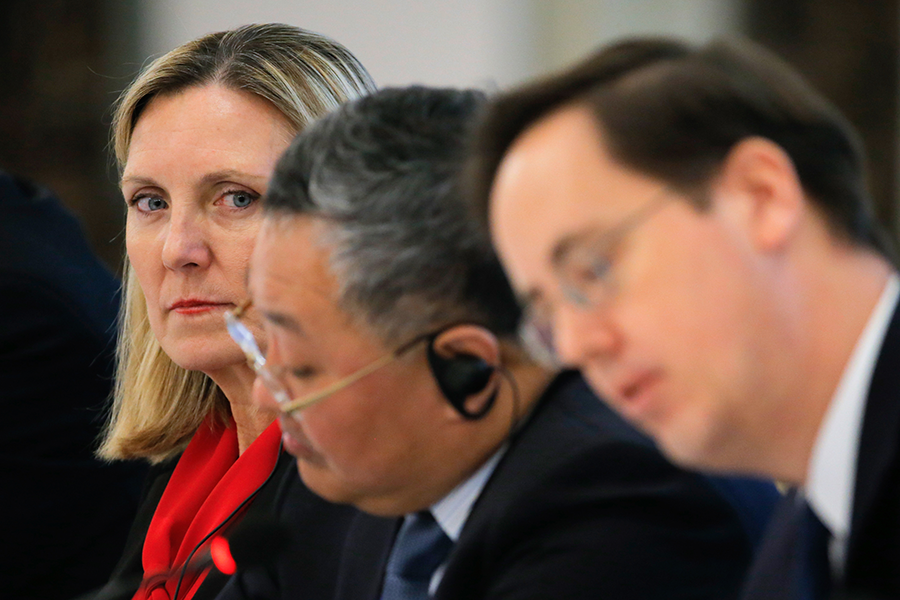 This leaves just one bilateral arms control agreement in place, the 2010 New Strategic Arms Reduction Treaty (New START), which is itself due to expire in 2021. The treaty could be easily extended for up to five years, thus ensuring a vital degree of transparency and stability in U.S.-Russian relations, but the Trump administration has shown little outward enthusiasm for this step. If the clock is allowed to run out on this crucial element of strategic stability, it will mark the first time that the United States and Russia have not had an arms control treaty in place or under negotiation in nearly five decades.
This leaves just one bilateral arms control agreement in place, the 2010 New Strategic Arms Reduction Treaty (New START), which is itself due to expire in 2021. The treaty could be easily extended for up to five years, thus ensuring a vital degree of transparency and stability in U.S.-Russian relations, but the Trump administration has shown little outward enthusiasm for this step. If the clock is allowed to run out on this crucial element of strategic stability, it will mark the first time that the United States and Russia have not had an arms control treaty in place or under negotiation in nearly five decades.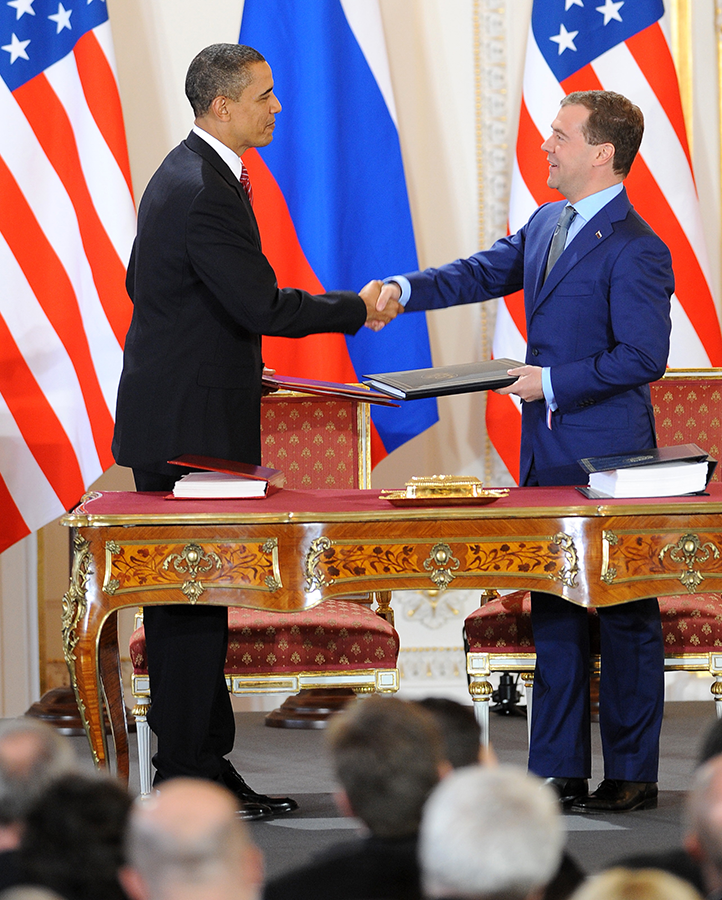 The degree to which the United States and Russia are now at odds in this domain has been impossible to ignore during the run-up to next year’s NPT review conference. Russia has accused the United States of violating the NPT through its NATO nuclear-sharing arrangement, while the United States has lambasted Russia for undermining the norm against the non-use of weapons of mass destruction and allegedly violating the INF Treaty. The two sides certainly have not seen eye to eye on all nonproliferation issues in the past, but they placed such a premium on presenting a united front to the other NPT states that they were often accused of “superpower collusion.”
The degree to which the United States and Russia are now at odds in this domain has been impossible to ignore during the run-up to next year’s NPT review conference. Russia has accused the United States of violating the NPT through its NATO nuclear-sharing arrangement, while the United States has lambasted Russia for undermining the norm against the non-use of weapons of mass destruction and allegedly violating the INF Treaty. The two sides certainly have not seen eye to eye on all nonproliferation issues in the past, but they placed such a premium on presenting a united front to the other NPT states that they were often accused of “superpower collusion.”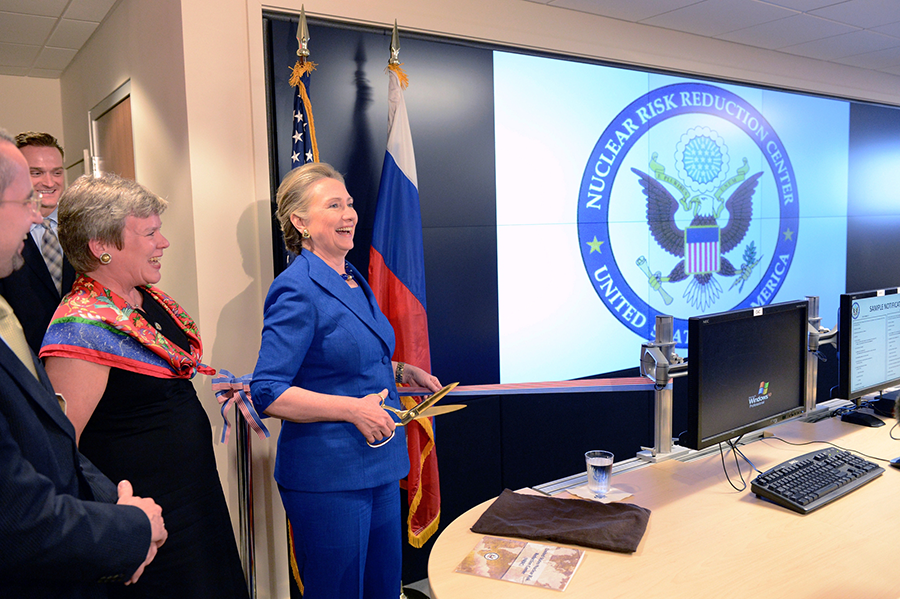 A particular selling point of this recommendation is the importance of nuclear risk reduction in avoiding the catastrophic humanitarian consequences that would result from nuclear use. From this vantage, nuclear risk reduction may constitute one of only a small handful of issues on which nuclear-weapon states, proponents of the Treaty on the Prohibition of Nuclear Weapons, and supporters of the humanitarian initiative could agree. The nuclear-weapon states would need to be careful not to frame risk reduction as a substitute for nuclear disarmament in the NPT setting, but if they succeed, this issue could represent an opportunity to find common ground at a time when few others exist. A focus on risk reduction would also align with the NPT preambular language, which recognizes the “devastation that would be visited upon all mankind by a nuclear war and the consequent need to make every effort to avert the danger of such a war.” Reaffirming the shared assumptions that underpin the NPT would be appropriate at the 50th anniversary of its entry into force.
A particular selling point of this recommendation is the importance of nuclear risk reduction in avoiding the catastrophic humanitarian consequences that would result from nuclear use. From this vantage, nuclear risk reduction may constitute one of only a small handful of issues on which nuclear-weapon states, proponents of the Treaty on the Prohibition of Nuclear Weapons, and supporters of the humanitarian initiative could agree. The nuclear-weapon states would need to be careful not to frame risk reduction as a substitute for nuclear disarmament in the NPT setting, but if they succeed, this issue could represent an opportunity to find common ground at a time when few others exist. A focus on risk reduction would also align with the NPT preambular language, which recognizes the “devastation that would be visited upon all mankind by a nuclear war and the consequent need to make every effort to avert the danger of such a war.” Reaffirming the shared assumptions that underpin the NPT would be appropriate at the 50th anniversary of its entry into force. Some seeds for change had been planted before he came to power, as an official working group set up by his predecessor drafted new principles and guidelines to govern the country’s nuclear sector,
Some seeds for change had been planted before he came to power, as an official working group set up by his predecessor drafted new principles and guidelines to govern the country’s nuclear sector, seek to expand efforts at Caetité, the nation’s only operating uranium mine, and to license new uranium and phosphate mining in Santa Quitéria. To do this, Brazil will have to streamline existing regulations and clearly divide labor between the state-controlled Nuclear Industries of Brazil (INB) and the private sector, divvying up the tasks involving nuclear and environmental licensing, safety and radiological protection and all remaining operations involving uranium. As of 2019, it is unclear what the final arrangement will be, and nuclear sector representatives worry that further delays may compromise the entire sector moving forward.
seek to expand efforts at Caetité, the nation’s only operating uranium mine, and to license new uranium and phosphate mining in Santa Quitéria. To do this, Brazil will have to streamline existing regulations and clearly divide labor between the state-controlled Nuclear Industries of Brazil (INB) and the private sector, divvying up the tasks involving nuclear and environmental licensing, safety and radiological protection and all remaining operations involving uranium. As of 2019, it is unclear what the final arrangement will be, and nuclear sector representatives worry that further delays may compromise the entire sector moving forward. The navy keeps strong connections with Brazil’s Nuclear and Energy Research Institute (IPEN), the country’s leading nuclear research and training institution. The navy helped IPEN secure funds for a new multipurpose reactor project, without which IPEN would be in dire financial straits. Navy officials lead Fundação Pátria, a nonprofit foundation that facilitates cooperation between IPEN and the Argentine nuclear technology company INVAP, the main partner in the multipurpose reactor project. Naval officers also occupy key positions on the governing board and the executive board of the project.
The navy keeps strong connections with Brazil’s Nuclear and Energy Research Institute (IPEN), the country’s leading nuclear research and training institution. The navy helped IPEN secure funds for a new multipurpose reactor project, without which IPEN would be in dire financial straits. Navy officials lead Fundação Pátria, a nonprofit foundation that facilitates cooperation between IPEN and the Argentine nuclear technology company INVAP, the main partner in the multipurpose reactor project. Naval officers also occupy key positions on the governing board and the executive board of the project.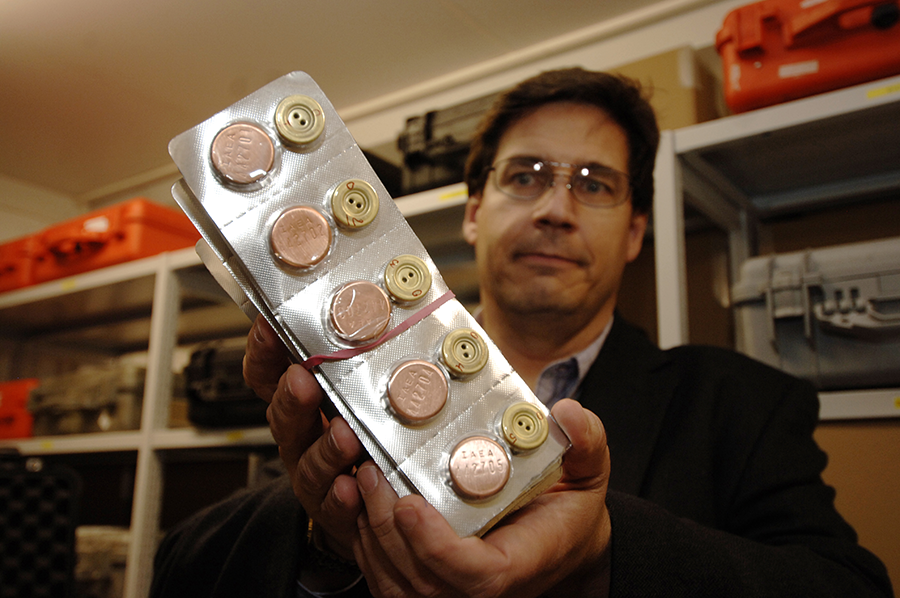 Verifying such an agreement would require building a monitoring regime that goes well beyond traditional international safeguards and bilateral arms control approaches while accommodating legitimate North Korean concerns over intrusiveness, which would practically preclude “anytime, anywhere” inspections. Creativity will be needed to design a verification scheme to which the United States and North Korea could agree and that could be implemented in affordable and practical ways and that politicians would deem credible.
Verifying such an agreement would require building a monitoring regime that goes well beyond traditional international safeguards and bilateral arms control approaches while accommodating legitimate North Korean concerns over intrusiveness, which would practically preclude “anytime, anywhere” inspections. Creativity will be needed to design a verification scheme to which the United States and North Korea could agree and that could be implemented in affordable and practical ways and that politicians would deem credible.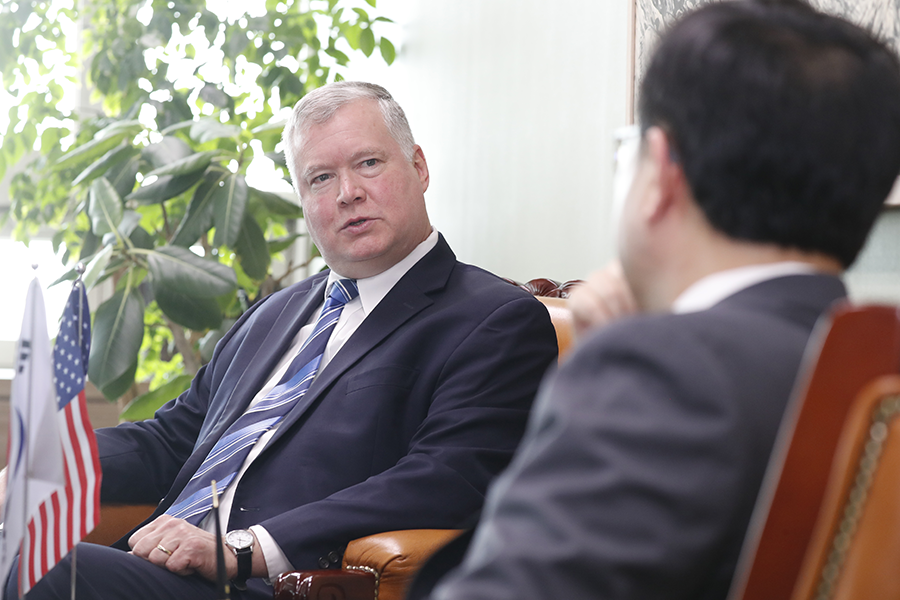 For these reasons, U.S. insistence on a traditional verification framework in negotiations with North Korea—implicit in the U.S. goal of final, fully verified denuclearization in North Korea—does not match the scope of the challenge, nor does it provide negotiators the flexibility needed to reach meaningful agreement. North Korea’s reported resistance to providing an up-front comprehensive declaration of its nuclear program for fear of creating a “target list” shows the need for a new approach.
For these reasons, U.S. insistence on a traditional verification framework in negotiations with North Korea—implicit in the U.S. goal of final, fully verified denuclearization in North Korea—does not match the scope of the challenge, nor does it provide negotiators the flexibility needed to reach meaningful agreement. North Korea’s reported resistance to providing an up-front comprehensive declaration of its nuclear program for fear of creating a “target list” shows the need for a new approach. Verification experts may debate what constitutes low-, medium-, or high-confidence levels, but the important shift introduced by a probabilistic view on verification is the prioritization of deterrence value alongside detection probability. The U.S. intelligence community treats monitoring technologies with no better than a 50 percent chance of detecting violation, or with 50 percent uncertainty in a measured quantity, as low confidence.
Verification experts may debate what constitutes low-, medium-, or high-confidence levels, but the important shift introduced by a probabilistic view on verification is the prioritization of deterrence value alongside detection probability. The U.S. intelligence community treats monitoring technologies with no better than a 50 percent chance of detecting violation, or with 50 percent uncertainty in a measured quantity, as low confidence.
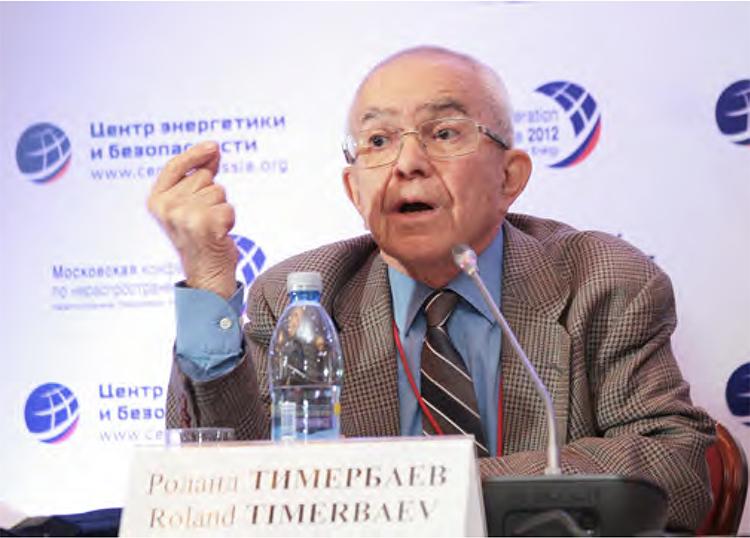 From the 1950s, after a brief stint at the fledgling United Nations, Timerbaev was directly supporting Soviet Foreign Minister Andrei Gromyko on nuclear weapons issues. (He remembered drafting the first Soviet proposal for a fissile material cutoff treaty in 1958.) Preventing nuclear annihilation became his consuming, life-long passion. He retired from the Foreign Ministry just as the Soviet Union was collapsing, resigning as permanent representative to the international organizations in Vienna, including, of course, the International Atomic Energy Agency (IAEA).
From the 1950s, after a brief stint at the fledgling United Nations, Timerbaev was directly supporting Soviet Foreign Minister Andrei Gromyko on nuclear weapons issues. (He remembered drafting the first Soviet proposal for a fissile material cutoff treaty in 1958.) Preventing nuclear annihilation became his consuming, life-long passion. He retired from the Foreign Ministry just as the Soviet Union was collapsing, resigning as permanent representative to the international organizations in Vienna, including, of course, the International Atomic Energy Agency (IAEA). The treaty has had a significant positive impact since it was adopted in 1996. With the notable exception of North Korea, the Comprehensive Test Ban Treaty (CTBT) has achieved de facto implementation despite not having entered into force, with no other nuclear state having carried out a nuclear test since 1998.
The treaty has had a significant positive impact since it was adopted in 1996. With the notable exception of North Korea, the Comprehensive Test Ban Treaty (CTBT) has achieved de facto implementation despite not having entered into force, with no other nuclear state having carried out a nuclear test since 1998.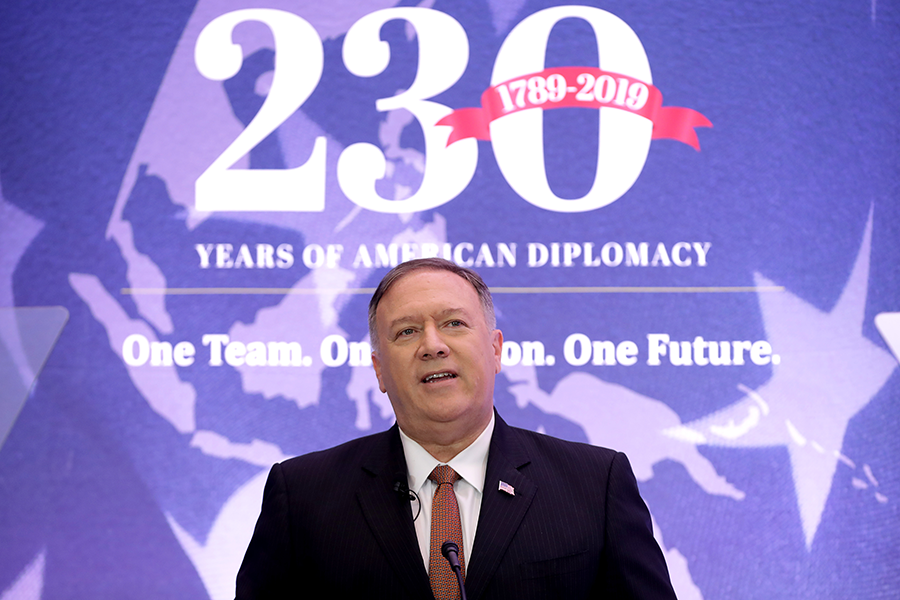 For several years, the United States has alleged that Russia was in violation of the INF Treaty by testing and deploying a banned missile system, and Washington pinned its treaty withdrawal squarely on Russia. “Russia is solely responsible for the treaty’s demise,” said Secretary of State Mike Pompeo in announcing the U.S. move. “Over the past six months, the United States provided Russia a final opportunity to correct its noncompliance. As it has for many years, Russia chose to keep its noncompliant missile rather than going back into compliance with its treaty obligations.”
For several years, the United States has alleged that Russia was in violation of the INF Treaty by testing and deploying a banned missile system, and Washington pinned its treaty withdrawal squarely on Russia. “Russia is solely responsible for the treaty’s demise,” said Secretary of State Mike Pompeo in announcing the U.S. move. “Over the past six months, the United States provided Russia a final opportunity to correct its noncompliance. As it has for many years, Russia chose to keep its noncompliant missile rather than going back into compliance with its treaty obligations.”
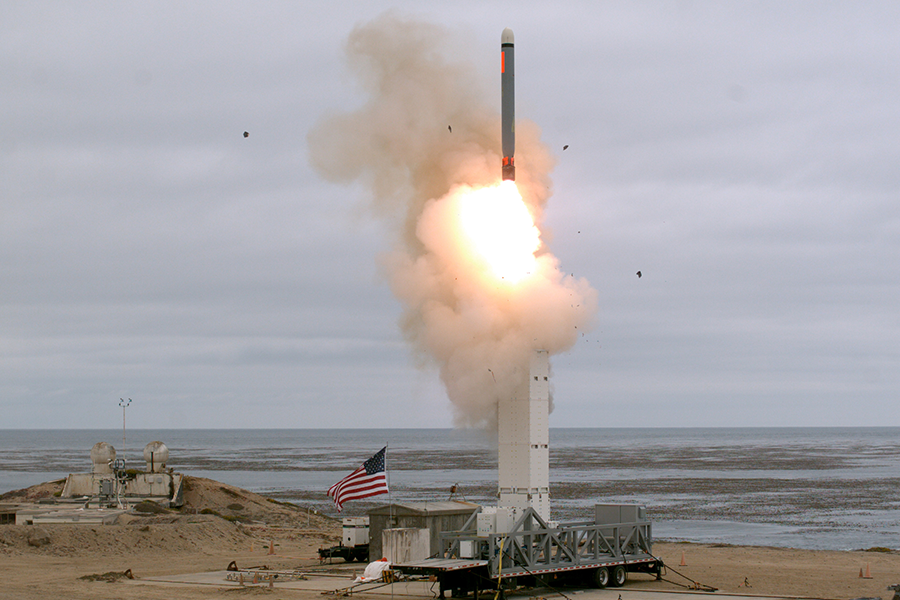 No sooner had the United States officially withdrawn from the agreement than newly confirmed Defense Secretary Mark Esper called for the rapid development and fielding of U.S. missiles once prohibited by it.
No sooner had the United States officially withdrawn from the agreement than newly confirmed Defense Secretary Mark Esper called for the rapid development and fielding of U.S. missiles once prohibited by it.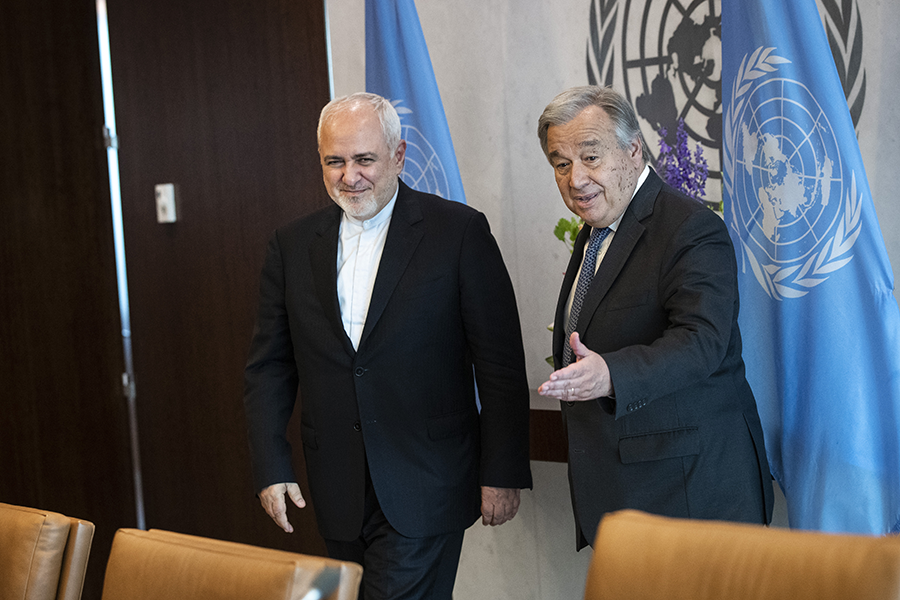 After its 2018 withdrawal from the Iran nuclear deal, the Joint Comprehensive Plan of Action (JCPOA), Washington has sought to curtail Iran’s oil exports, but only after the United States announced that it sought to bring those exports down to zero, did Iran begin to exceed some of the deal’s restrictions. Iran contends that the JCPOA allows it to selectively reduce compliance if Iran does not receive the benefits promised under the deal. Iran has begun to enrich uranium to levels slightly higher than the 3.67 percent called for in the JCPOA and is also exceeding limits on its stockpile of low-enriched uranium. As of August 19, Iran had 357 kilograms of enriched uranium, 57 kilograms above the limit. The government has said that it will continue to take steps that breach the accord every 60 days if the current stalemate continues.
After its 2018 withdrawal from the Iran nuclear deal, the Joint Comprehensive Plan of Action (JCPOA), Washington has sought to curtail Iran’s oil exports, but only after the United States announced that it sought to bring those exports down to zero, did Iran begin to exceed some of the deal’s restrictions. Iran contends that the JCPOA allows it to selectively reduce compliance if Iran does not receive the benefits promised under the deal. Iran has begun to enrich uranium to levels slightly higher than the 3.67 percent called for in the JCPOA and is also exceeding limits on its stockpile of low-enriched uranium. As of August 19, Iran had 357 kilograms of enriched uranium, 57 kilograms above the limit. The government has said that it will continue to take steps that breach the accord every 60 days if the current stalemate continues.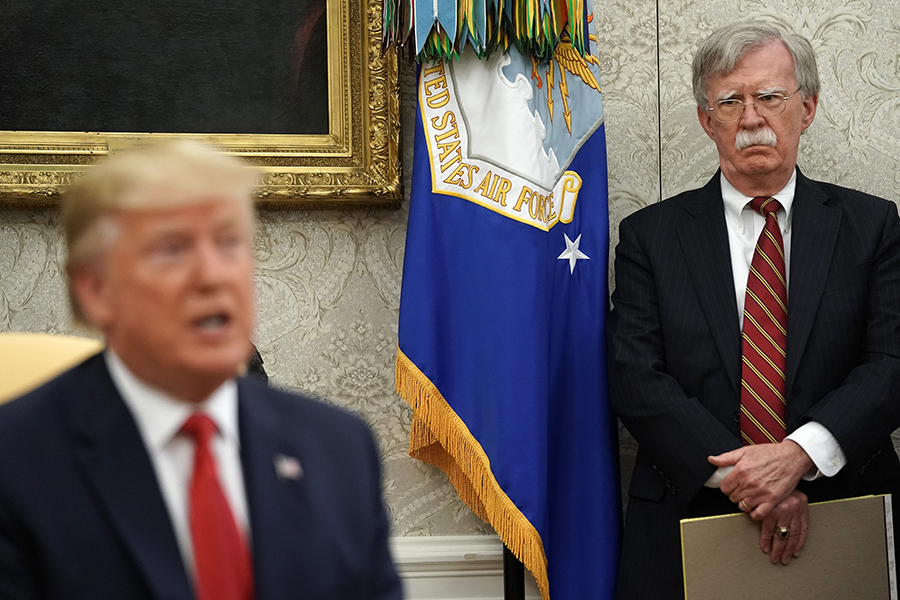 Echoing comments he made in a June interview with the Washington Free Beacon, Bolton told the Young America Foundation’s annual National Conservative Student Conference on July 30 that “while no decision has been made,” New START is “unlikely to be extended.” (
Echoing comments he made in a June interview with the Washington Free Beacon, Bolton told the Young America Foundation’s annual National Conservative Student Conference on July 30 that “while no decision has been made,” New START is “unlikely to be extended.” (